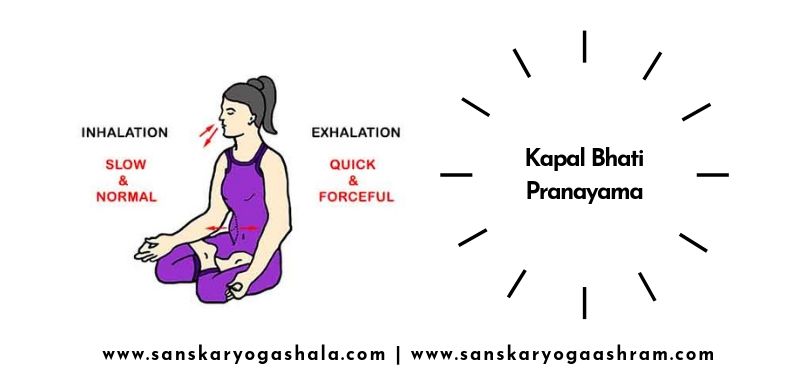Now we come to another of the pranayama techniques since we had a little insight into the simple bellow breathing technique. The name of this pranayama has been given as KAPAL-BHATI and the two distinct words mean “ skull” or “head “ and “ glow” which signifies that the practice of this pranayama results in a glowing skull or a glowing head and face of the practitioner. This pranayama is very unique since many texts include it in the cleansing process while others consider it as pranayama.
Since this technique emphasizes on the modulation of the process of inhalation and exhalation we consider it as pranayamas well. Kapalbhati is also unique in a way that here the pace or speed of both the processes are faster than usual. Doing so it is both an energetic as well as a revitalizing process in a matter that it pumps up the blood and excitement of a practitioner both, still in a rhythmic way. Now let’s see how we go about doing this technique.
Kapal Bhati Pranayama
Firstly, we become seated in a comfortable seated posture and again observing stillness and calm for a while before we begin. Next, we start doing this pranayama by forcefully exhaling out the air by forcing the diaphragm (the lower stomach) inside which results in immediate exhalation of air through the nostrils As immediately we forcefully exhale the inhalation next is also given very less time and as soon as we feel our emptied lungs and stomach filled we again forcefully exhale as we did earlier.

In this manner, we continue repeating or progressing this forceful diaphragm exhalation and inhalation quickly. Hence unlike other pranayama techniques here our breathing cycles are covered in very short intervals. This way we begin doing a continuous rhythm of forceful exhalation and inhalation while establishing and continuing with this rhythm as per our capacities. Beginners can firstly learn to carry on this quick rhythm and then move on doing it more number of times.
A simile or comparison for the duration of this pranayama type can be considered as such that each cycle of this forceful exhalation and inhalation routine should last for one second. Which means that with each movement of the second’s arm of the clock the rhythm of Kapal Bhati pranayama progresses?
Talking about various precautions the main precaution to be taken is again nor overdoing it. The process demands forceful breathing cycles but doing so no undue stress on your stomach muscles or on your overall gesture is not required. Another simile for this is given in the manner that your facial expression mustn’t change while doing Kapal Bhati Yoga signifying the nostrils and face must not be stressed at all while doing it , only the lower stomach or diaphragm needs to be pulled inside forcefully and that too in a mild and rhythmic manner without undue push or pull.
While practicing Kapal Bhati rhythmically a distinct sound of air being pushed out is heard. But the practitioner need not worry if he/she is not hearing that sound since it would appear itself as the practice is sustained.




